NBTHK papers
The Nihon Bijutsu Tōken Hozon Kyōkai is a Japanese foundation established in 1948 to review and preserve Japanese swords.
During the Meiji Restoration (aka Meiji ishin), the Samurai lost their right to be Japan's armed forces. The special privileges such as wearing a Katana and wakizashi were taken away with the Haitōrei Edict in 1876.
Power returned to the emperor and the Tokugawa shogunate resigned from its duties. There were a number of Samurai armed rebellions against these innovations, of which the Satsuma was one of the largest.
This upheaval caused many blacksmiths to have a hard time making other items. A few individual smiths kept the craft of making traditional Japanese swords alive.
In Japan, however, awareness of the preservation of the culture of the samurai became apparent and this was honored with an exhibition of the emperor in 1934.
After World War II, the Allies confiscated Japanese swords with the exception of those kept at home.
The Japanese government designated 17 swords as important works of art and on February 24, 1948, a foundation was established to pass on the Japanese swords to future generations. Among the volunteers of this foundation was a director of Tokyo National Museum and a number of prominent sword researchers.
On May 1948, a "Sword Art Special Exhibition" was held in the National Museum, an exhibition on swords as works of art. A certification system for swords was also created.
In 1976, in the city of Okuizumo, Shimane Prefecture, the Nittoho Tatara factory was established to produce tamahagane (authentic Japanese sword steel) for forging genuine Japanese swords.
The prices of swords rose when the sword was certified and in 1982 a new certification system was created to maintain a reliable system.
The monopoly of valuation and certification currently rests entirely with the NBTHK which is controlled by the government and you can assume that this has value with regard to a Japanese sword. By the way, it is not only the Katana that is judged but also the wakizahsi, tanto, koshirae, yari, naginata and many more. The NBTHK is therefore responsible for screening and issuing a certificated opinion on the submitted object.
Gendai Toshoku Teno
The Gendai Tōshoku Ten (formerly Shinsaku Meito Ten) is a competition of modern Japanese swords. The two parts are the cutting ability of the blades and the engraving of the steel.
There are several certificates possible with increasing degree of importance of a particular sword blade or blade. The koshirae can also receive a certificate. Submitting a sword is called shinsa or judging. The papers that you may receive after assessment are called origami. Judging is a serious matter and it passes through several independent hands. It usually takes about three months before you get a definitive answer, but it can take up to a year for an object that is more difficult to assess.
There is an old system (from 1948 to 1982) and a new system that started in 1982 and is still operational today. The certificates are increasing in ranking but it must be said that a Hozon certificate itself is difficult to get. The Hozon certificate is the first of the four levels and means that the Katana is 'worthy of preservation'.
I have made an overview of the certificates and you can find them below. It is important to note that the top two certificates have never been changed and are therefore still valid.
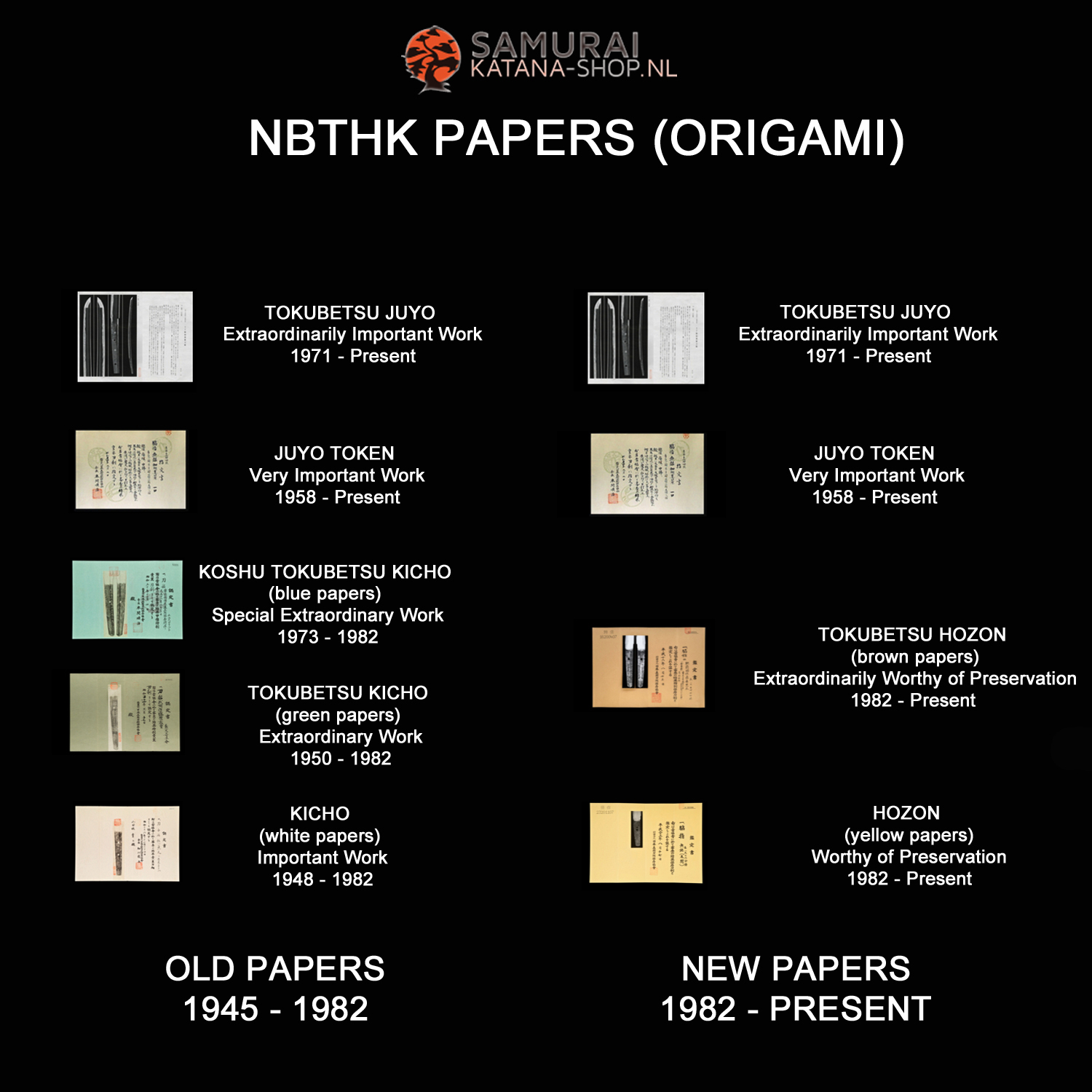
New system
HOZON - "Worthy of Preservation"
TOKUBETSU HOZON - "Extraordinarily Worthy of Preservation"
JUYO TOKEN - "Very Important Work"
TOKUBETSU JUYO - "Extraordinarily Important Work"
Old system
KICHO (white papers) - "Important Work"
TOKUBETSU KICHO (green papers) - "Extraordinary Work"
KOSHU TOKUBETSU KICHO (blue papers) - "Special Extraordinary Work"
JUYO TOKEN - "Very Important Work"
TOKUBETSU JUYO - "Extraordinarily Important Work"
New System
Swords that have been offered at the NBTHK since 1982 therefore receive one of the certificates below, if they meet the following criteria
HOZON - "Worthy of Preservation"
1) A Zaimei sword (a signed tang or nakago) must be genuine. A Mumei (unsigned) sword the blade must be able to indicate a clear period of time, place or school.
2) The sword blade must be worth the effort despite possible scratches or damage.
3) A sword from the Koto (ancient) period before the Nanbokucho period (before 1333) will be carefully examined.
4) Repairs or polishing should not adversely affect the sword's original condition or beauty.
5) Modern swords after 1868 must be a Zaimei (signed) and not be shortened (Ubu Nakago).
6) A Gimei (false signature) will not be certified.
7) With a fatal Kizu or flaw or chip the sword will not be certified.
8) Swords are put on "reservation" (horyu) if the authenticity of the mei cannot be easily decided. This also applies to mumei sheets in which an attribution is difficult to make.
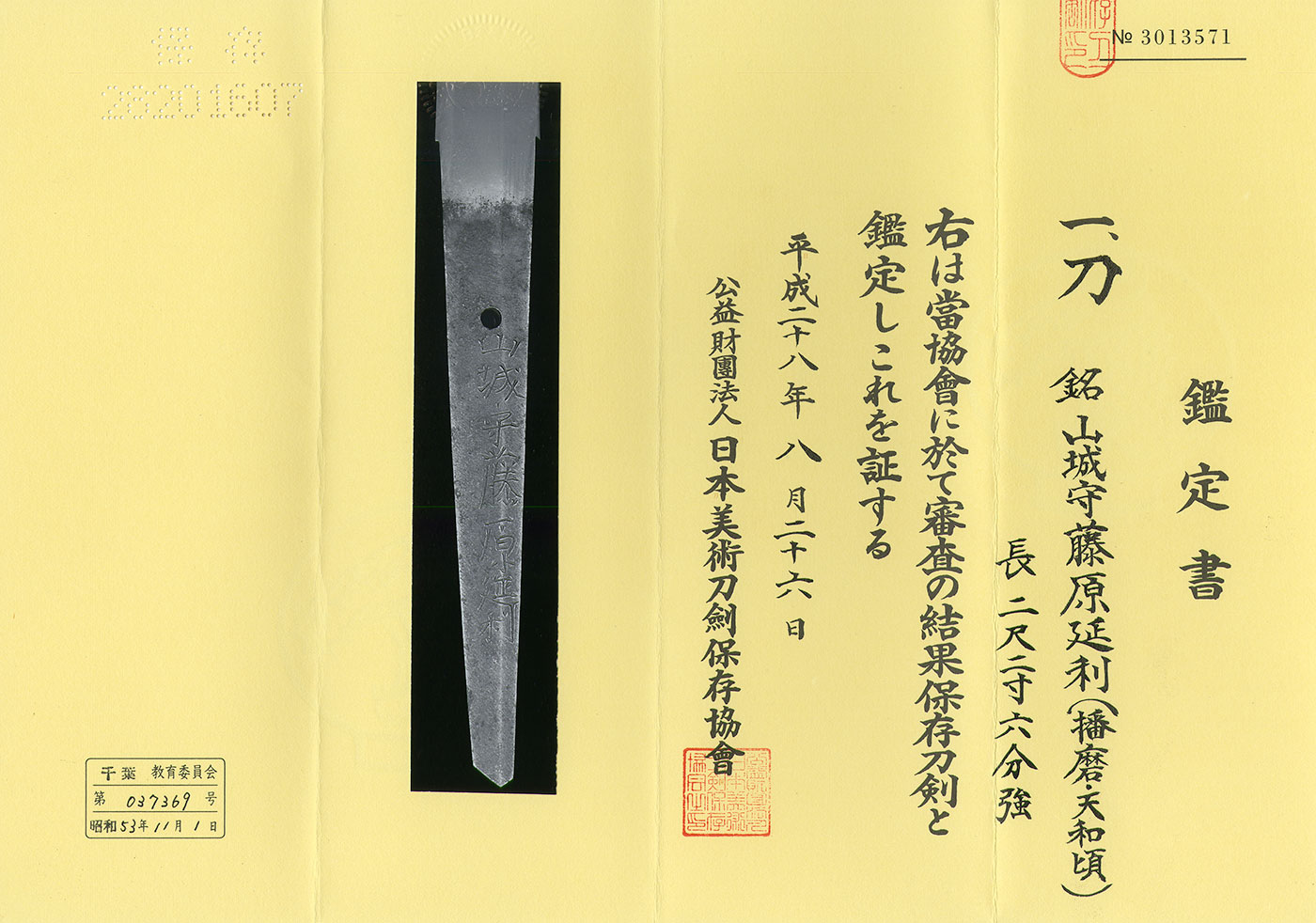
TOKUBETSU HOZON - "Extraordinarily Worthy of Preservation"
1) A Japanese Sword with a Hozon paper, good workmanship and state of preservation can receive Tokubetsu Hozon paper.
2) Knives with the following conditions are excluded from item 1.
A. Re-tempered blades, as a rule, should not receive Tokubetsu Hozon paper unless they date no later than Nanbokucho, are zaimei, by famous smiths, if the blade is valuable as a reference and if the jiba and nakago are sufficiently well preserved. However, this will be documented as "yaki-naoshi" in the paper.
B. Mumei sheets from the Muromachi and Edo periods, as a rule, do not receive Tokubetsu Hozon paper. However, if a knife is attributable to a famous blacksmith and is in excellent condition, it can receive Tokubetsu Hozon paper.
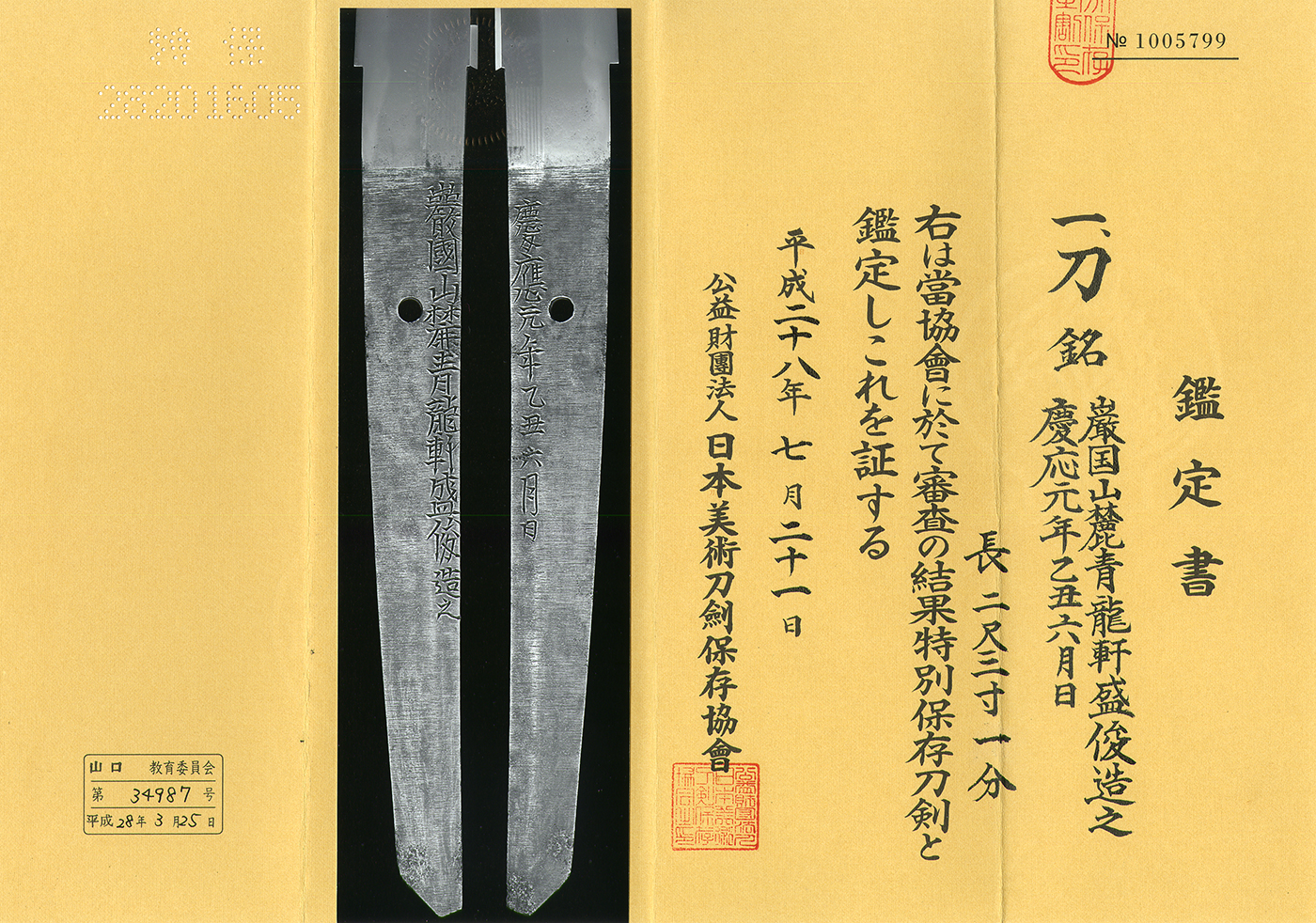
JUYO TOKEN - "Very Important Work"
Knives with Tokubetsu Hozon Paper can receive Juyo if one of the following is true:
1) Sheets with extremely high quality workmanship and state of preservation, and rated as close to Juyo Bijutsuhin, can receive Juyo Token paper.
2) Sheets that meet the above criteria and are made in or for Nambokucho can receive Juyo Token paper even if they are mumei. Sheets made in the Muromachi period must be zaimei and sheets from the Edo period and later, as a rule, must be ubu and zaimei to receive Juyo Token paper.
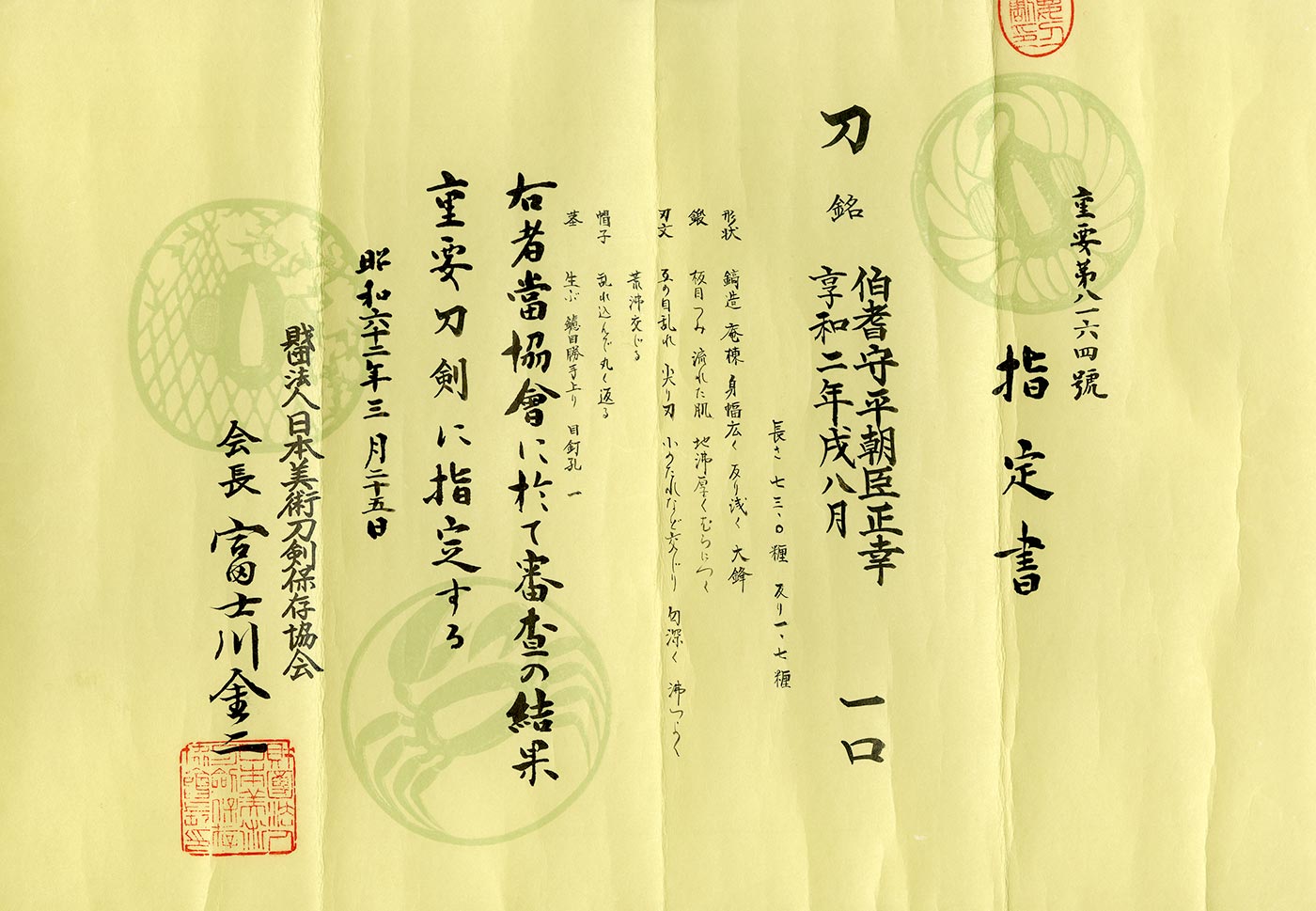
TOKUBETSU JUYO - "Extraordinarily Important Work"
Under Juyo Token, those of excellent quality and superior condition, rated as the same as the top level Juyo Bijutsuhin, or conceivably equivalent in value to Juyo Bunkazai, can receive Tokubetsu Juyo Token paper.
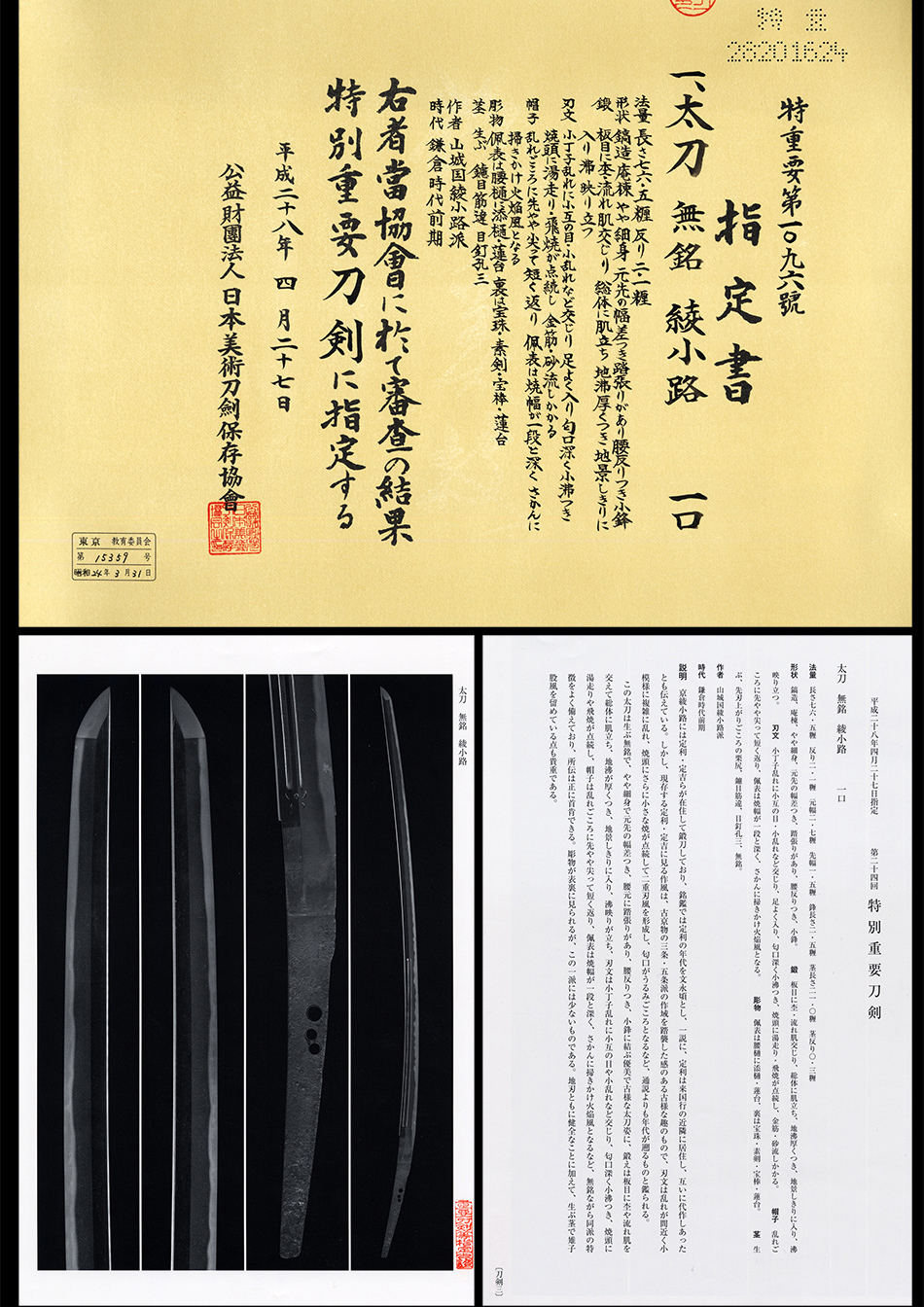
Old system
KICHO (white papers) - "Important Work"
These Kicho certificates issued from September 12, 1948 to June 1982. Kicho origami was issued at the headquarters and local branches, and were called a "white papers". The literal translation of KICHO is "Precious".
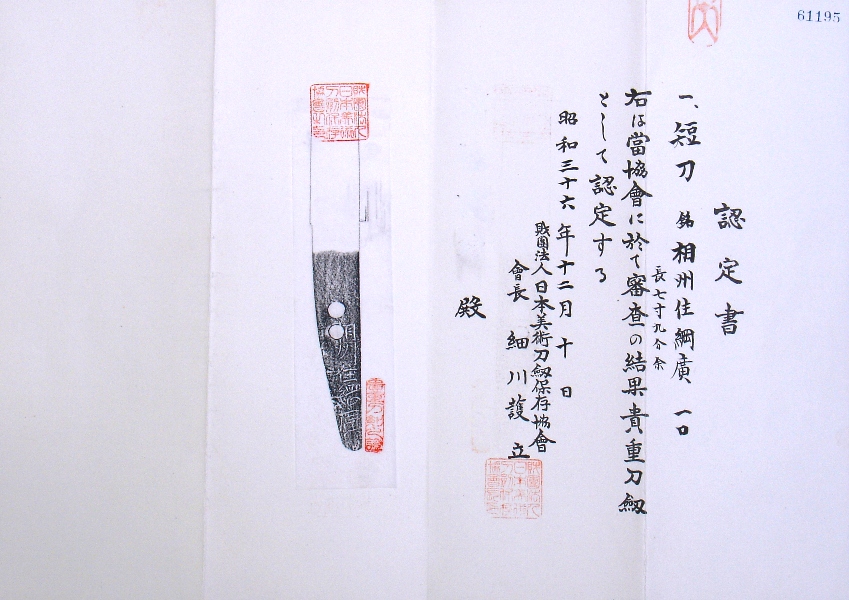
TOKUBETSU KICHO (green papers) - "Extraordinary Work" - Particularly precious
This certificate started in March 1950 (Showa 25) and was issued until June 1982 (Showa 57). The certificate was issued at the head office and local branches, and were commonly referred to as "greenpapers". Tokubetsu Kicho means "particularly precious".
This was in fact the highest rank until the Juyo paper was introduced in May 1958 (Showa 33). The green paper and the round seal with the kanji of "Toku" were first used on Tokubetsu Kicho papers from July 1950 and this continued until 1982.
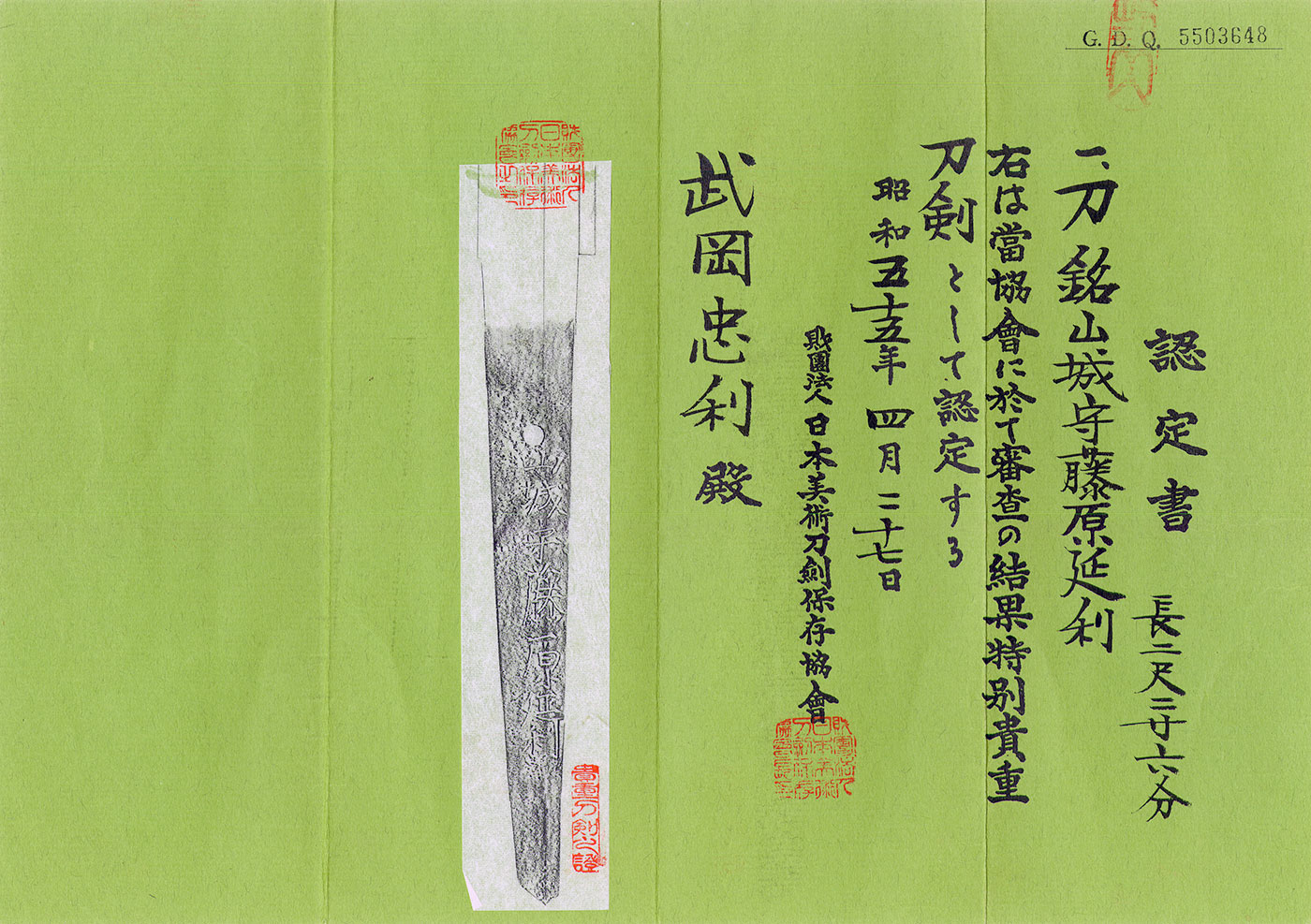
KOSHU TOKUBETSU KICHO (blue papers) - "Special Extraordinary Work" - Extraordinarily precious
In 1973 (Showa 48) Koshu Tokubetsu Kicho paper (blue paper) was introduced. This very rare and collectible certificate was issued as a rank above tokubesu kicho (green paper) but below juyo token. Only exceptional swords could achieve this level of certification.
%20Origami%20.jpg)
JUYO TOKEN - "Very Important Work"
Knives with Tokubetsu Hozon Paper can receive Juyo if one of the following is true:
1) Sheets with extremely high quality workmanship and state of preservation, and rated as close to Juyo Bijutsuhin, can receive Juyo Token paper.
2) Sheets that meet the above criteria and are made in or for Nambokucho can receive Juyo Token paper even if they are mumei. Sheets made in the Muromachi period must be zaimei and sheets from the Edo period and later, as a rule, must be ubu and zaimei to receive Juyo Token paper.
TOKUBETSU JUYO - "Extraordinarily Important Work"
Under Juyo Token, those of excellent quality and superior condition, rated as the same as the top level Juyo Bijutsuhin, or conceivably equivalent in value to Juyo Bunkazai, can receive Tokubetsu Juyo Token paper.
Sword without certificate
But what if a sword has no papers? Is this worthless then? The reasons for this can be very diverse. It is possible that a sword was in a private collection. Submitting to the NBTHK costs money, so if a sword is already outside Japan, you have to consider whether this outweighs the costs. It is possible that a sword will receive a certificate, but there is no guarantee for this.
But when buying a katana you should always realize that a sword chooses its owner and that it is then suitable for you. Above all, with a genuine antique Katana, you can be assured that the Samurai's Soul is most likely in his sword.

